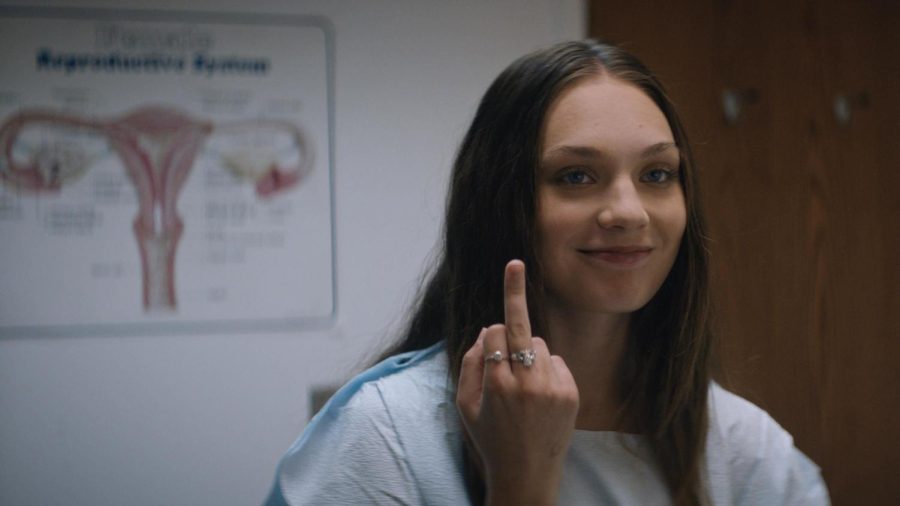‘Bloody Hell’ empowers with unique coming-of-age story
March 16, 2023
Molly McGlynn’s second feature film “Bloody Hell” follows 16-year-old Lindy (Maddie Ziegler) after she gets diagnosed with Mayer-Rokitansky-Kuster-Hauser syndrome, a rare congenital disorder that makes having sex extremely difficult. After receiving this news, Lindy confronts new thoughts about her body, sexuality and self-worth.
McGlynn’s script developed a feel-good tone for the South by Southwest selection. Despite the occasionally cheesy dialogue, on-the-nose jokes and melodramatic line deliveries, even the most saccharine moments fit the hopeful, colorful feeling of the story. The film does not take too much time to deal with the negatives of the diagnosis, but instead leans into a humorous and optimistic tone that imbues Lindy’s story with positivity.
Aesthetic decisions fit the film’s heartening coming-of-age tone perfectly. A vibrant palette of hues make a nice touch, including large pink and red credits introducing the movie and setting the scene with famous quotes about girlhood. Additionally, each teen’s bedroom feels realistic and well-designed, including posters, decorations and colors filling the rooms wall-to-wall to uniquely match each character.
The film also does a great job informing viewers on what MRKH syndrome means for Lindy without feeling convoluted. While the film does explore the medical implications of the diagnosis — showing frustrating gynecology appointments and intimate moments of Lindy wincing through prescribed vaginal exercises — it also delves into how the diagnosis impacted Lindy in various aspects of her life. Ziegler (“The Fallout”) gracefully portrays how this diagnosis affects her character’s outlook, leaning into a vulnerable performance to highlight her character’s insecurities and desire for sexual validation. By exploring the diagnosis from various emotional angles, Lindy feels like a well-developed character, which makes her journey toward self-acceptance ultimately feel more satisfying.
However, toward the end of the movie, the abundance of conflict causes the story to feel jumbled. As Lindy juggles three love interests, her track team, her best friend and her mom — who has her own problems — it becomes an overwhelming task for the viewer to keep track. In the third act, the film switches between moments of victory and loss, forgiveness and conflict and anger and resolve, dragging on until the happy ending. While the long list of conflicts gives viewers a glance at Lindy’s various relationships, the film fails to reach an emotional peak that makes all the fighting feel worthwhile.
Still, “Bloody Hell” leans into the mess and turmoil that comes with self-acceptance during adolescence. McGlynn captures the coming-of-age spirit with an immensely unique story that will leave viewers rooting for Lindy, while also reflecting on the trials of youth.
3½ beachside kisses out of 5












